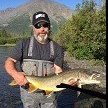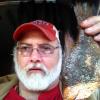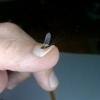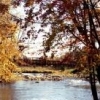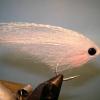Search the Community
Showing results for tags 'hackle'.
Found 18 results
-
A few new additions. I'm impress how long the hackle is these days. When is it to long? red label gold midge honey dun ties size 18 and 20, probably going to be able to tie a dz flies per hackle. Some of the hackle is 24+inch on this saddle. I might need to cut the hackle in half to rap it green label gold grade medium brown ties size 16 and 18, silver grade dark brown also ties size 16 and 18. Both have 20 inch hackle. I have a platinum grizz I bought years ago, all 3 of these saddles are fuller and longer.
-
I don't know anything about flies or fishing, other than commercial fishing. I thought this might be a good place to ask. I'm raising a chicken crossbreed that has developed unique hackle and saddle patterning. It is more delicate and intricate than their Barred Rock father. They are called Rainbow Rock. Should I save the feathers if I have to eat any of these guys?
-
Hey it Timmy again be sure to check out my Instagram page @timsflyfishing_pa I am posting today due to weeks of problems with the one and only prince nymph I got the hardest part down (tying in the biots) but i strugle to find a hackle witht the correct length and stiffness to accomidate the pricne nymphs legs. I have tried Indian hen back grab bag hackle and even something is given to me by another fly tyer Mr James Shawley. Still, the fibres where to long 1 and a half the length they should be, im tying these on size 14 standard Daiichi hook. I haven't tried the hackles from underneath a brown hackle cape would these work be I just not looking for the right size? The one cape I was given is good stiffness but too long and the other one I have is good length but stands straight up. I tie it back but I still feel like it should be loose and wavey. Please help me out. If anyone has any extra hackles or materials im a new fly just started and am not asking for handouts just keeping an eye out for someone who might want to help as you all know to be 17 and a fly tyer is difficult when money is tight. I am working on getting a summer job at a fly shop though. Thank you and anyone who might have materials... anything hackle dubbings chennile hooks fur please email me @[email protected] or message me on here. Or if you know anyone with tons of materials im looking anywhere I can. Excuse spelling
- 8 replies
-
- nymph
- prince nymph
-
(and 3 more)
Tagged with:
-
Hello, My name is Timmy Pope am new to this form. I am a 17-year-old fly tier and fisherman from state college pa. I am looking for any advice I can get please add my fly tying page on Instagram @timsflyfishing_pa. My original question is what flies can I tie with a grey natural dun hackle its a very light grey and I did not mean to order it. But I have many questions and would appreciate any messages on my Instagram and this site. If anyone has any extra hackles or anything they don't want feel free to let me know lol.
-
The Adams dry fly is one of the most popular dry flies ever created for good reason. It mimics a mayfly perfectly and has proven itself throughout many years of fishing. It is widely effective on many rivers and creeks, and will continue to be for many years to come, if not forever! One of the catskill style flies, this will float high when heavily hackled, has a nice profile, and can be tied in a wide range of sizes. I regularly tie 16-20 with these, but I know of some people tying all the way down to a size 26 and up to a size 10. If you get a Cree hackle, then you can use just one feather rather than two. However cree tends to be much more expensive, so I tie with the double feather method to achieve the brown and grizzly look. As always I am listing the materials I used on this fly. Hook I used: Firehole sticks #419 in size 16 Thread: Brown Veevus 16/0 Tail: Grizzly and Brown Rooster Neck Wings: Grizzly Hen neck Body: Adams Gray, UV2 Fine and Dry dubbing Hackle: Brown and Grizzly Rooster Neck Head cement: Hard as Hull
-
** UPDATED ** Hello everybody... I'm going to attempt to tie a "Better-Winged Olive Mayfly" from a recipe I found by Steve Schweitzer. In it, he calls for "gray (dun) hackle" for the wings and legs. Since this is a dry fly, where do I look for this hackle (i.e. what feathers should I be looking for)? Thanks in advance... SpokaneDude
-
Wooly Buggers are probably the most commonly used streamer ever created. They are also very versatile and can be used for almost all species of fish. From freshwater fish like trout, bass and crappie to even saltwater fish like surf perch, striper, and even sea trout, this fly will work for them all. I have personally fished wooly buggers in rivers, lakes, ocean surf, and in bays. Ive also fished the wooly bugger in California, New mexico, Colorado, and Texas with great success. But these will work throughout the world. This variation replaces the hackle with rubber legs. This gives the fly a bit more movement, and makes it look a little more interesting. I probably have the best luck with bass on this imitation, but I have caught my fair share of trout, redfish, and striper on this exact pattern. Hook: Daichi 1750 - size 8 Cone Head: Gold, 4.5mm Weight: 0.015 size lead wire Thread: UTC 140 denier - dark brown (use black if you have it) Tail: Black marabou Body: Black estaz Legs: Black silly legs
- 12 replies
-
- fly tying
- wooly bugger
-
(and 5 more)
Tagged with:
-
This video is part of a series. Please don't tell me that I should have talked about the difference between dry fly hackle, or hackle quality, or how to buy a cape, or anything like that. This video is for a specific purpose. I have a flies that I use this specific technique for. Instead of showing it in the entire video, I can just link to this one. This allows me to offer more info, or less info. You can select another video if you want more information. Or you can watch a simple 4 minute video without having to watch the extra steps, if you already know how. While there is much more to know about hackle, I am focusing on the simple stuff, with selecting hackle feathers off of a cape for use in a streamer tails, wings and as lateral lines. Its very important to prepare the hackle properly, and select the right feathers in order to get them to sit right on the fly, and even get the correct action. "Music: ukulele - Bensound.com" https://youtu.be/yD5mMAK-OK8
- 21 replies
-
Ok, Rookie question number two. Im pretty sure i know what hackle is, and i know i need to get some, however, everytime i go to a supplier (online) i dont know where to look for it at. Is it natural, synsetic? Body, thorax, wing. Every supplier puts it or calls it something else. Also is Hackle---- broken down into different types, ie grizzly, brown, etc etc. let me put it this way, is hackle the Heading and broken down into types and colors or is there a difference, other then color between Grizzly, Brown, tan, etc. Thanks much Yall are awesome
-
After fishing last evening I think its time to get serious about dry fly fishing, I think I read or somebody told me once that you should put 6 wraps of hackle on a dry fly, I'm sure that's average taking into consideration the barbs per inch can anybody make any comments on that ?
-
Is there any advantage to using the UV activated "Goo" as opposed to super glue or head cement.......I know, there is some difference in setting time, however, I have learned that if the item is dampened slightly, super glue will set up almost immediately. My other question is regarding hackle. What is the difference, functionally, between saddle hackle and neck hackle? Is it just size? Is one as good as the other? Is it just where it is plucked from, neck or butt? I'm sure I will have more questions before I learn all this stuff, so, please bear with me........I'm old and slow! Thanks to all that reply for your time and sharing your knowledge.
-
First order of business, I'm new to the forum as evidenced by my "Bait Fisherman" member title. I hope that no one is "gut hooked" and harmed by this post. Second order; I'm obsessing over hackle sizing today and need some perspective. I've started to tie more small flies on wide gape hooks (with the belief that bite on the hook set is improved). I've always adhered to the rule of thumb that hackle for a dry should be 1.5X the hook gape. My understanding of the logic behind this is that a properly proportioned Catskill style dry will float at three points of contact; tip of hackle, bottom on hook bend and tip of tail. So it follows that if I'm tying on a wide gape dry fly hook I should throw away the sizing gauge and eyeball the hackle if I want it to float properly? (This seems to create some implications for matching the hatch as I've essentially tied a larger fly on a smaller hook). Here's the real question. I fish a lot of parachute style dries and spent wing patterns, but don't bother much with the Catskills. I don't think I should really care much about the hackle size. The fly is floating flush to the plane of the water so the hackle dimensions relative to hook gape don't seem to have any (as much) relevance to flotation. Real issue is that the fly simply appear to be properly proportioned to the real insect. Thoughts and comments on the matter? Thanks.
-
Here is my newest YouTube tutorial on the process of selecting saddle hackle. I discuss an overview on saddles versus necks/capes, give tips to both select and purchase hackle, and finish with color and provider recommendations. Feel free to post anything additional you've experienced, or other quality hackle providers. Thanks! TC
-
I'm beginning to feel a bit confused about the various types of hackle out there and what each is supposed to be used for. I have the following: Genetic rooster cape Genetic hen cape India hen back Strung saddle It's my understanding that the rooster cape is for mainly dry flies. Would this be collars, beards, and palmering? Should I not use it for wet flies or does it also have a purpose there? What about the hen cape? Those feathers are not quite as long, webbier, and have rounded tips. Are these used for mainly dry, or wet, or both? I'm not seeing a huge difference between the India hen back and the hen cape but that' probably more me not knowing what to look for. How are those two different and what am I supposed to use each for? The strung saddle I got at Bass Pro and it is really a lot shabbier looking than the other stuff that I have. Is that mainly for palmering large wet flies. Does it have a specific use than that of my other hackle? Thanks!
-
Hello, Pretty new to fly tying and I'm trying to build up my supply of dry hackle. I have a very nice collection of wet hackle colors but for dry I'm pretty limited. Mostly I'm looking for something things in the 10-24 range for size as well. So to my quesiton. What would be the best colors to purchase in both cape and saddles to give me the best options. I've already settled on medium Dun as most have suggested, as well as natural Grizzly. If you could only purchase 4 saddle/cape combos what would you get? Just to let you know I'm freshwater only but I'll tie anything I can learn to. Thanks, FlyTieDad
-
What are the best hackles for streamer saltwater/warmwater patterns? Where should i buy from? What companies? Saddle or neck? Rooster or hen? HELP!!
-
Can someone explain the difference between hen and rooster cape, neck, and saddle hackle? I'm trying to tie some decievers but i don't know what to buy?Where to buy it from? HELP?
